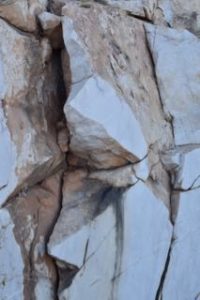During our travels, we have learned how Namibia struggles with the preservation of people versus natural resources. Both local culture and resources are treasured and respected. There is a delicate balance between the two. Preservation of people and culture plays an important role in Namibia’s heritage. Namibians are proud and cling tight to their . Natural resources are not only valued to sustain life, but also draw thousands of tourists a year, which boosts the economy. Managing these two can be difficult as they intersect often within the economy.

The 4X4 drives through the Namib Desert on a designated path so as to not disturb the delicate ecosystem and dune structure surrounding it. Tours are given throughout the year to educate tourists and students on the preservation of the desert and its wildlife.
Our group of Texas A&M and Prairie View A&M students visited the Namib Desert in Swakopmund, Namibia. The Namib Desert is a valuable natural resource and a popular tourist destination. While in Swakopmund, we took in a Living Desert Tour in the Dorob National Park. During the tour, we learned about the delicate balance between the unique ecosystem of the desert and the tourism economy occurring in Dorob National Park.
The Namib Desert is protected by several laws governing the tourism industry to maintain the area’s wildlife and ecosystem. The sand dunes in Dorob can be affected by the slightest human interaction or activity. Motorized vehicles leave tire tracks that last for years due to the delicate landscape of dunes and surrounding areas. Balancing the preservation of the Namib Desert and the tourism industry, which can cause a negative impact on the environment, is a difficult task.
During our Dorob Park tour, we were allowed to walk on pre-designated foot trails and drive on a worn path, so as to not disturb habitats and cause unsightly marks in the sand. The Living Desert tour guides expressed to us that there are regulations in place allowing only certain operators and vehicles within the park. Paths and roads are regulated to prevent long-lasting tire tracks and other unnatural effects in the ecosystem. In the Dorob National Park, tourism is balanced with preserving natural resources in the Namib Desert. Nature tours, such as the Living Desert Tour, and recreational uses (dune buggies and 4x4s) both have spaces in the Dorob National Park. While there are restrictions in place, tourism is allowed because displaying the beauty of Namibia is a core value of the country. Tourism opportunities also provide jobs for Namibians and is an integral part of the economy, second only to mining, providing 10% of the country’s GDP.

Evidence of white marble mining is clearly displayed as Aggies take a hike up the mountain on Farm Habis. For N$25, one can obtain a license to mine on private land, which disrupts farmers and other land owners, and ruins landscapes.
The Namib Desert is not the only natural resource in Namibia challenged by inhabitants’ culture. Mining, accounting for 13% of Namibia’s GDP, is also a delicate natural resource. However, mines support many small towns, including Karibib. Without mines, many Namibian towns would lack jobs and an economy to sustain themselves.
The unemployment rate of 27.4% makes every job essential for life in Namibia. Mines are not guaranteed to last forever. Eventually the resource is depleted and miners must move. Mining also disrupts the landscape and causes a plethora of problems. When visiting Farm Habis, outside of Karibib, we learned that anyone with N$25 can apply and receive a prospect license to enter private land to search for mining opportunities.
Prospecting occurred on Farm Habis. What once was a beautiful mountain for the zebra to graze is now riddled with the skeleton of an abandoned white marble quarry. Unfortunately, there is little that land owners can do to prevent prospective miners from entering their property.
This issue affect farms and also impacts tourist attractions. Disrupting a habitat can ruin the prospect of wildlife habitat, and the opportunity for tourists wanting to see such wildlife. Preserving the untouched nature of Namibia is essential. The unique ecosystems and landscape sets Namibia apart from the rest of the world.
Mining can be extremely disruptive to the landscape, leaving scars on the land that will never heal. Mines destroy the opportunity for many to thrive long term because they destroy the natural beauty of the landscape in Namibia. Since mining accounts for a large percentage of Namibia’s economy, it is difficult to balance mining with the nearly equal tourism industry. Both are essential to Namibia’s culture and economics.
Through our time here, we have learned how important tourism is to Namibia’s economy. Namibians enjoy displaying their culture and lands to others, but struggle to find a balance between preservation and interaction. Desert tours and mining are only a couple examples of the struggle between preserving natural resources and Namibians’ culture that makes Namibia so special.